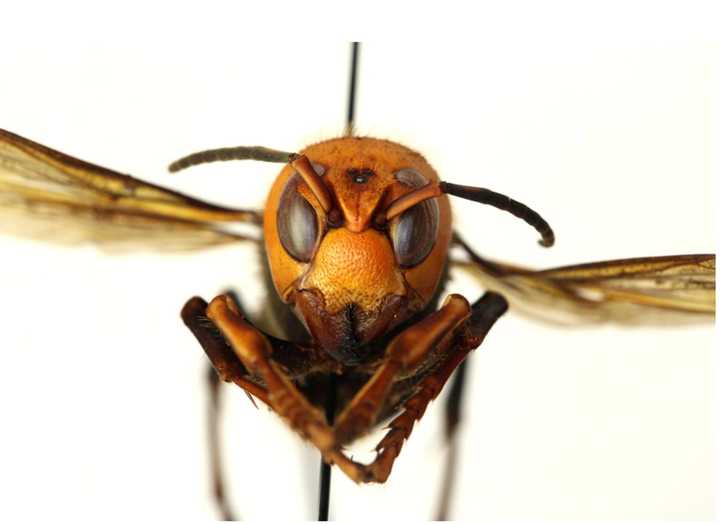Asian giant hornets can use shark-fin shaped appendages to destroy a beehive, decapitating its victims in a matter of minutes.
“It’s a shockingly large hornet,” said Todd Murray, Washington State University's Extension entomologist and invasive species specialist. “It’s a health hazard, and more importantly, a significant predator of honey bees.”
That's especially concerning since there has been a honey bee decline from about six million hives in 1947 to 2.4 million hives in 2008, a 60 percent reduction, according to United States National Agricultural Statistics.
For larger prey, the insect's stinger is long enough to puncture the suit of a beekeeper and its venom has been described as being like hot metal driving into the skin.
In Japan, the hornets account for 50 deaths a year, according to The New York Times, which reported on the insect's first United States sighting: in Washington State, where a beekeeper observed piles of dead bees with their heads ripped off.
The Washington State Department of Agriculture verified the sightings near Blaine, Washington, located about 32 miles south of Vancouver, British Columbia.
There have also been reports of sightings in Canada, The New York Times said.
How did they arrive in the US? According to CNN, they could have been transported in international cargo.
“As a new species entering our state, this is the first drop in the bucket,” Murray said.
Once established, invasive species make “forever changes” to local crops and ecologies, the Washington State Department of Agriculture said.
“Just like that, it’s forever different,” said Murray. “We need to teach people how to recognize and identify this hornet while populations are small so that we can eradicate it while we still have a chance.”
Click here to follow Daily Voice Torrington and receive free news updates.

